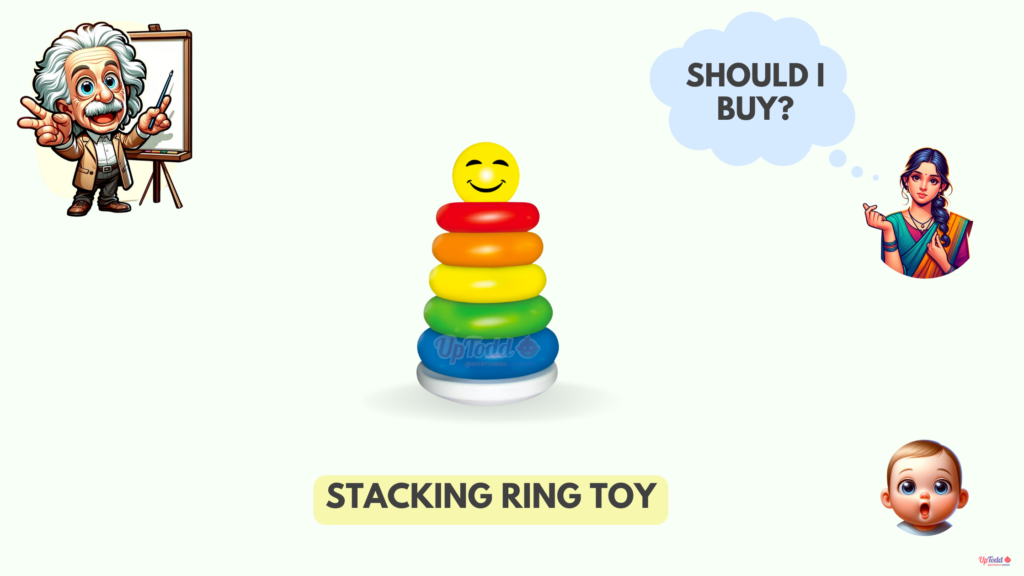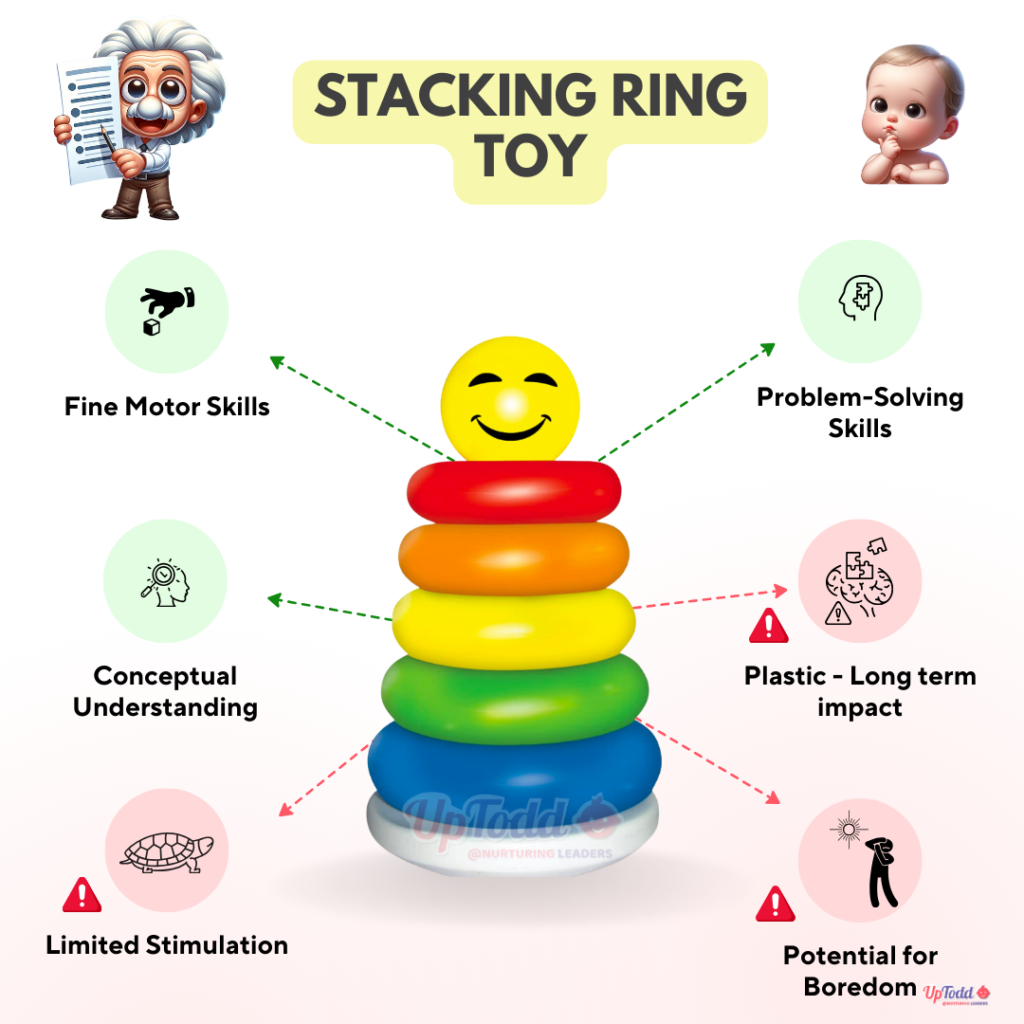
The Stacking Ring Toy, a classic in the world of early childhood development, has been a staple in toy boxes around the globe. Parents and educators alike have praised and critiqued this toy for its simplicity and educational benefits. Let’s take a closer look at the Stacking Ring Toy with insights from our expert, the Einstein Growth Guru, to determine its value and appropriateness for your child’s developmental journey.

Pros of the Stacking Ring Toy
Fine Motor Skills
The Einstein Growth Guru emphasizes the toy’s ability to enhance fine motor skills. As children grasp, sort, and stack the rings, they develop coordination and dexterity. “Such activities are crucial for the fine-tuning of motor skills in young learners,” the guru explains.
Patience
Stacking toys require patience as children learn to balance and correctly order the rings. This process, as noted by the guru, “teaches children the value of patience and persistence, skills that are beneficial beyond playtime.”
Problem-Solving Skill
The challenge of figuring out which ring fits where fosters problem-solving abilities. The Einstein Growth Guru points out, “The Stacking Ring Toy introduces basic problem-solving strategies, laying the foundation for future cognitive development.”
Conceptual Understanding
Our guru highlights another benefit: understanding concepts such as size, color, and sequence. “Through play, children develop a conceptual understanding that is pivotal for academic learning in later years,” he adds.
Cons of the Stacking Ring Toy
Materials Used
Several concerns arise from the fact that most Stacking Ring Toys are made of plastic. “When children, especially babies, put these toys in their mouths, there’s a risk of exposure to harmful chemicals. The Einstein Growth Guru warns that long-term challenges, including language and behavioral issues, have been associated with such materials.
Limited Stimulation
While beneficial, the toy offers limited stimulation. “After mastering the basic concept, children might find the toy less engaging, leading to potential boredom,” the guru observes.
Potential for Boredom
The repetitive nature of the toy can lead to boredom for older toddlers. “Children in the upper age range sold for these toys might seek more complex challenges,” he notes, advising parents to consider the toy’s longevity in their child’s playtime.
Age Recommendations and Materials
The Einstein Growth Guru advises parents to assess their child’s interest and developmental stage when introducing the Stacking Ring Toy, which is specifically designed to cater to the developmental needs of infants and young toddlers aged 6 months to 1.5 years, despite being sold for children up to 3 years.
Constructed from plastic, the toy’s material is a point of contention. “While durable, parents should remain vigilant about the safety and quality of the plastic used,” he adds.
Final Thoughts by Einstein Growth Guru
With the Einstein Growth Guru’s insights, it’s clear that the Stacking Ring Toy offers significant developmental benefits, particularly for younger children. However, the material and potential for limited stimulation are factors parents should consider. By understanding these aspects, you can ensure that the Stacking Ring Toy is a valuable and safe addition or not to your child’s early learning experiences.
Explore UpTodd luminary pathway to unleash hidden abilities of the baby
